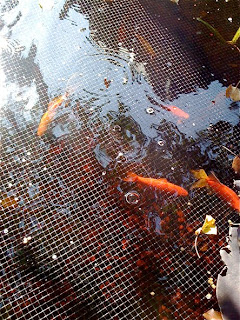

During these Baton Rouge days over the past two weeks Starbucks has been an almost regular stop on my travels around town and country. Not really a signal that the ubiquitous green, black and white logo is a special sort of magnet pulling me daily toward its caffeinated charms, but more a mark of dependance on the available WI-FI Internet connection. In spite of living most of the time surrounded by and embracing the tools and objects of time past, the vintage fountain pens, old spoons and dishes, the preference for books instead of Kindle or iPad, in spite of these and other ‘old-timey’ interests, I have to admit my addiction to being wired up for a little time each day. To get that online fix during these days of vacation at 1051, the nearby Starbucks has provided a solution to connection problems in the house.
Figured if I was going to write something about sitting around Starbucks I could at least find an interesting factoid or two about the company. It was founded in 1971 by three fellows in Seattle, an English teacher, a history teacher and a writer. No one involved is named Starbuck, and the name comes from a character in Moby Dick. The first mate on Captain Ahab’s ship, the Pequod is named Starbuck. The number could be a few more or less, but you will find Starbucks in about fifty-five countries worldwide. The first branch outside North America opened in Tokyo in 1996. By the end of March 2010 there were 877 stores in Japan. If you're planning a trip to Tokyo, guaranteed you will find the Starbucks urge easily satisfied. In more than one part of the city there are even Starbucks on opposite corners of an intersection. One of the best, at least in warmer months, is the larger of three stores in western Tokyo’s Kichijôji area, the one located at the back of Tokyu Department Store with it’s wide and spacious deck opposite The Gap. Comfortable spot to pass an hour or two on a spring afternoon. The photo here was taken at night and doesn’t really do justice to the terrace atmosphere. The Japanese are no different from many in other countries who frequent Starbucks, and hang out there with their laptops and schoolbooks, or a group of friends. They love their coffee just as we do, and I would bet that business is booming there.
These past days have given me a chance to 'eavesdrop’ on conversations and attitudes in a not-very-Cajun Starbucks located at the Towne Centre mall in the Goodwood area of Baton Rouge. It’s an upscale kind of place, and the people flowing in and out are well-dressed and well-spoken. One man I’ve noticed on several occasions always has a thick book from the more difficult shelves; yesterday was The Decameron by Boccaccio. Three girls from LSU like to study here, but you have wonder how much of that gets done between the cell phone texting and the peals of laughter. Business meetings are happening at every other table, and Bluetooth phone calls from every direction make you wonder if you’ve stumbled into a rest stop for schizophrenics. Is it just me or is it hard to get used to people sitting in a chair talking and gesturing to an invisible presence? A note about the Starbucks employees here and elsewhere—No question there are exceptions, but my experiences have always been good whether in Louisiana, Florida or Japan, the service friendly and efficient. Just don’t ask me about the low fat pumpkin brulee holiday frappaccino. I’m a straight coffee kind of guy.





































